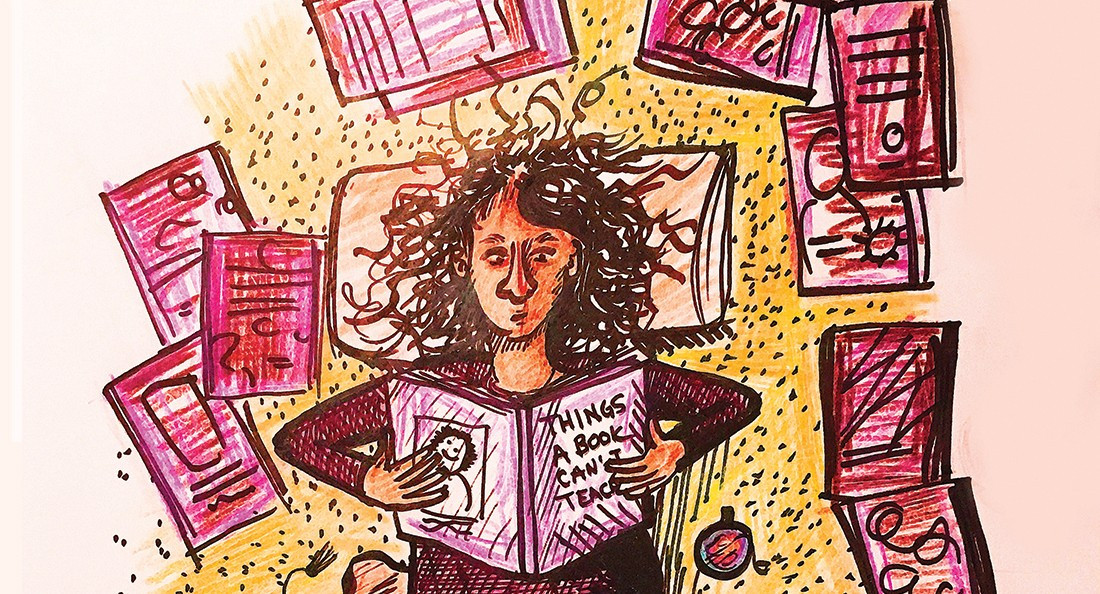Halfway to somewhere
Thoughts from the library corner
It’s the end of November, and if you are as busy as I am, this time of year will be characterized by long hours spent studying in tucked-away corners of the library or days spent staring blankly into the dull glow of a computer screen.
So much of our education is done while we sit in one place. We engage our minds while our bodies remain stagnant. Sometimes learning does just demand that we need stillness to concentrate. However, the physical space we learn in seems to often be overlooked in educational contexts.
Recently, in a critical theory seminar I am taking, we abandoned our small windowless classroom and began meeting in the basement of Riddell Hall. Even from having one class within the course like this, I noticed the level of engagement in the class conversation significantly increase.
This kind of approach definitely has its limitations and caters much more to small, upper-level humanities courses than it would to say, a large, lecture-based science course.
It’s hard to shift your perspective too far when the real demands of a university education require us to learn in a certain way. Sitting down and studying course material for hours can certainly teach discipline, but that kind of learning, if pursued too far, can result in a detachment from lived experience.
I also don’t want to devalue the real intellectual learning that happens on campus. I do, however, think there needs to be a greater reciprocal relationship between our actions and education.
It’s all fine to learn challenging new ideas at university, but what we learn should inform the ways we act and the kind of things we are mindful of when interacting with people in our daily lives. This way, the value of education becomes abundantly apparent if we allow our everyday lives to become enriched by the ideas we learn in our classes.
Likewise, learning often comes from the very real experiences we have outside classrooms and in the outside world. When we get up and go to our jobs, homes, families outside the classroom, we should not leave behind the challenging ideas we have had to face in school. We should apply the theory we learn and test it out in the outside world.
In my critical theory class, we often discuss the lived experiences classmates bring forward that relate to the topics we are studying. This kind of engagement makes abstract concepts make more sense and seem much more applicable.
Whether or not it is from the actual courses I am taking, I often feel like being around campus gets me into a headspace where I seek out new perspectives and ideas. As the last few days of the semester roll by, this is a good time to consider how that mental space can be brought into the everyday – how lived experience can function as a valuable tool, and how the things learned in the little study corners of the library can function alongside the experiences of the everyday.
Published in Volume 72, Number 12 of The Uniter (November 30, 2017)








